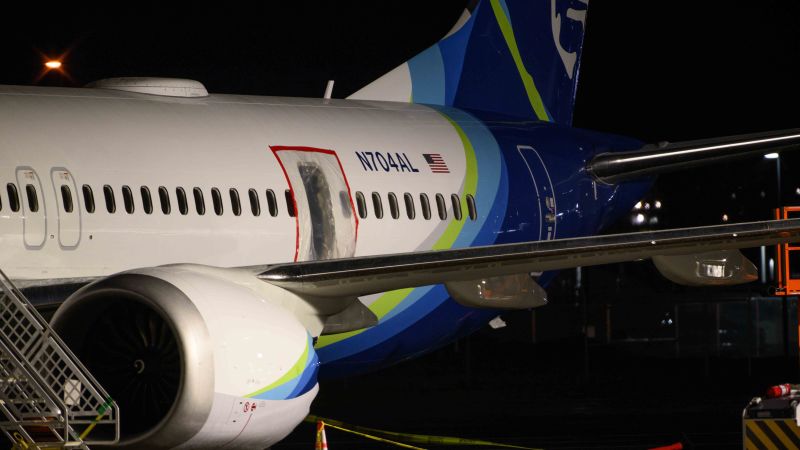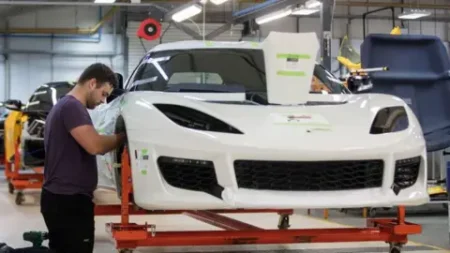In a harrowing incident last year, an Alaska Airlines flight was rocked by an unexpected and terrifying event when a door plug unexpectedly popped off at an altitude exceeding 16,000 feet, leading to rapid and explosive decompression. This incident not only traumatized all on board, but it particularly struck a mother with profound fear as she believed her baby might have been lost through the gaping hole created in the aircraft’s fuselage.
The sheer horror of such a scenario is difficult to fathom, and it raises a significant question regarding aviation safety regulations concerning the transportation of infants. If parents were required to secure their infants in a car seat on an airplane—much like they must do so in a vehicle—such tragedies might be averted. Yet, despite persistent pleas and recommendations made over the years, no such mandates have been enforced.
Recent testimony collected during a hearing by the National Transportation Safety Board (NTSB) shed light on the pandemonium that unfolded aboard the ill-fated flight. Reports indicate that passengers experienced sheer chaos as clothing was torn from their bodies, and personal items, including mobile phones, were violently propelled out of reach by the intense rush of air following the decompression. Flight attendants were left in a state of uncertainty regarding the status of their passengers until they successfully landed the aircraft, delaying their assessments.
Amidst the confusion, the flight crew’s primary concern was the safety of three infants aboard, who were being held in their parents’ laps rather than secured in car seats. One concerned mother conveyed her panic to the flight attendants, expressing her belief that her child had been ejected from the plane through the gaping breach. This revelation sent shockwaves through the cabin crew, illustrating the deep fears and anxieties faced by parents in such precarious situations.
Fortunately, it was later confirmed that the child had not been lost during the incident, though details surrounding the child’s exact location at that moment remain undisclosed in the NTSB transcripts. The aircraft managed a safe landing within a short time, leaving all 177 passengers unscathed, including the infants.
In light of the investigation’s findings, the NTSB reiterated its call for the Federal Aviation Administration (FAA) to require that passengers aged two and younger occupy their designated seats, thereby enhancing safety protocols. The NTSB has historically advocated for such regulations, yet the authority to implement these measures rests solely with the FAA.
While instances of parts falling from aircraft during flights may be infrequent, the inherent risks posed to infants during turbulence—a much more common occurrence—are alarming. The NTSB investigators highlighted incidents in which infants were injured due to sudden turbulence, with one instance involving a child being flung several rows away from their parent.
The necessity for infants to be secured in their own seats is a notion championed by NTSB board member Thomas Chapman, who articulated concerns regarding the misleading belief that a parent can protect a child adequately in their arms during tumultuous flight conditions. Chapman advocated for regulatory change, underscoring that while progress has been made, the top aviation regulatory body has remained unyielding in implementing necessary reforms.
Despite encouragement from the FAA recommending the use of approved child restraint systems, there is a distinct lack of mandatory legislation. Their rationale surrounding this hesitance encompasses concerns over potentially discouraging families from flying, subsequently increasing the likelihood that they might choose driving—a much riskier mode of travel.
The specter of lost revenue remains a significant worry among airlines that may see a decline in bookings should mandatory car seating become a stringent requirement. Airlines for America, the trade association representing the airline industry, did not directly respond to the inquiry regarding regulatory obligations for infants.
Conflict also arises from advocacy groups, such as the Association of Flight Attendants, which has propagated the message for the need to protect those who cannot advocate for themselves—the infants. Representative Sara Nelson articulated frustration over the lack of progress on this vital safety issue, emphasizing that the logic behind car seats should equally apply to airborne travel.
Advocates warn that the stakes are high, with certain experts arguing that the absence of required safety restraints places infants at extreme risk. The discussions surrounding the implementation of such regulations prompt contemplation of whether the regulatory bodies prioritize passenger safety over financial implications.
In reaction to the critical call for changes in airline safety protocols, some aviation safety experts contend that compelling statistics and close calls are often needed to catalyze necessary modifications to existing regulations. In light of the past incident involving the door plug popping off, the continued lack of resolution regarding secure seating for infants raises serious concerns about aviation safety oversight for the most vulnerable passengers on board.











